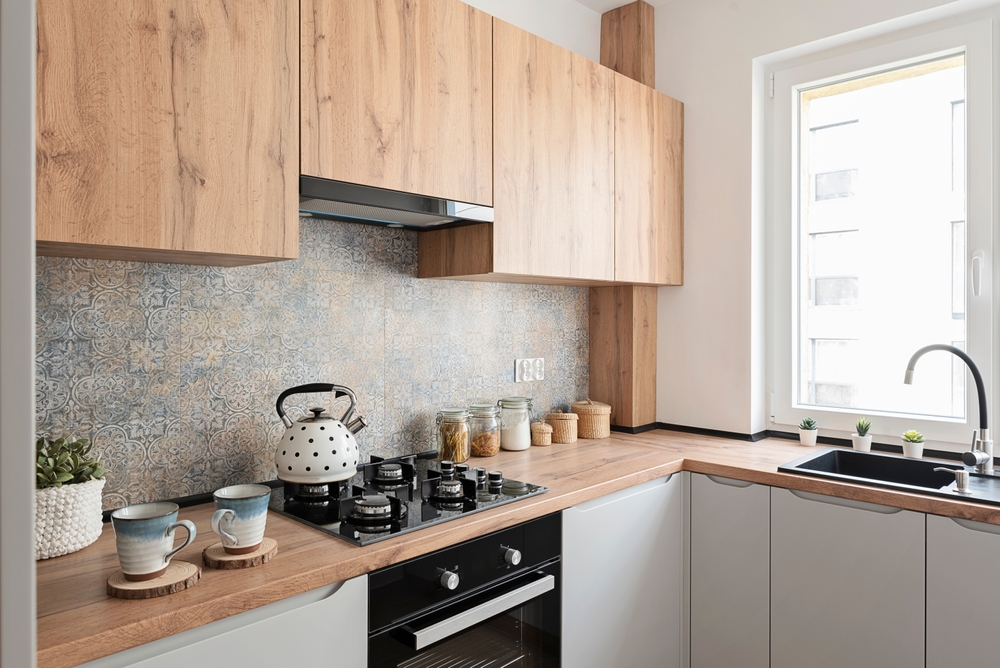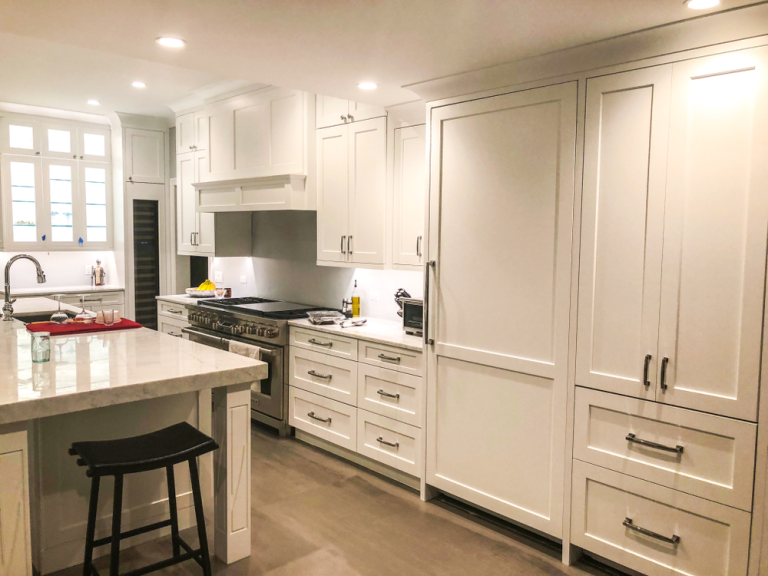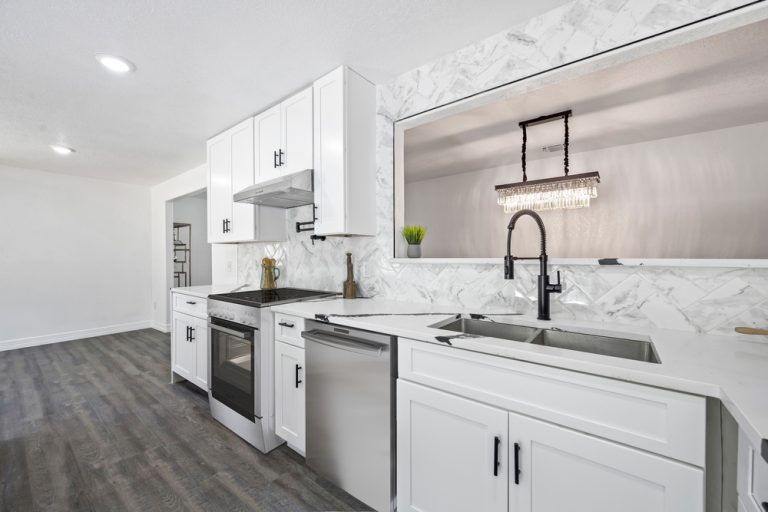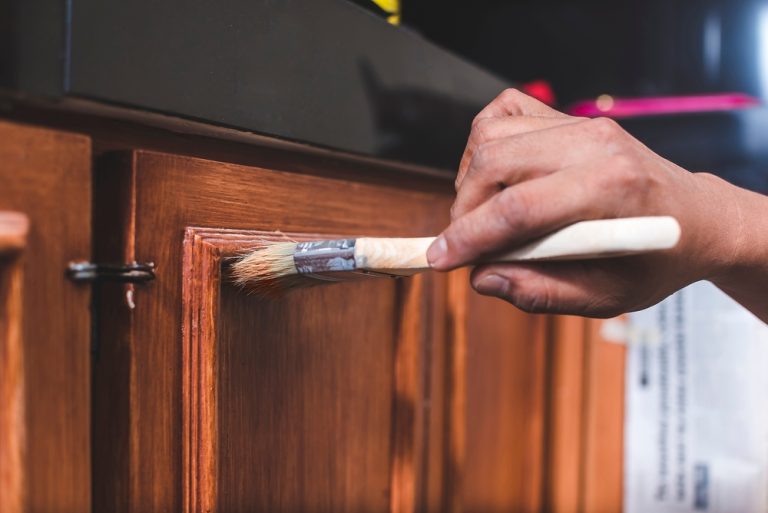How Many Kitchen Cabinets Do I Need?

One of the most important questions to consider when designing or remodeling a kitchen is, “How many kitchen cabinets do I need?” The answer depends on several factors, including your kitchen’s size, your storage requirements, and the overall layout you envision.
In this blog, we’ll explore how to determine the right number of cabinets for your kitchen, ensuring that your space is both functional and aesthetically pleasing.
Assessing Your Storage Needs
The first step in determining how many kitchen cabinets you need is to assess your storage needs. Every kitchen is unique, and the number of cabinets required will vary based on how you use your kitchen and what you need to store.
Consider Your Cooking Habits
- Frequent Cooking: If you cook regularly and have a wide array of kitchen tools, utensils, and appliances, you’ll need more cabinets to store these items. This includes space for pots, pans, baking dishes, and specialty cookware.
- Occasional Cooking: If you cook less often or rely on simple meals, you might need fewer cabinets. In this case, prioritize cabinets for essential items like dishes, glasses, and basic cookware.
Think About Your Family Size
- Larger Families: A larger family typically requires more storage space for dishes, food, and cooking tools. You’ll need enough cabinets to accommodate the needs of everyone in the household.
- Smaller Families or Singles: Smaller households may need fewer cabinets, especially if you have fewer dishes or don’t require extensive pantry space.
Account for Specialty Items
- Small Appliances: Consider how many small appliances you own and where you’ll store them. If you prefer to keep appliances like blenders, mixers, and coffee makers off the counter, you’ll need additional cabinet space.
- Pantry Items: If your kitchen doesn’t have a separate pantry, you’ll need to allocate cabinet space for storing dry goods, canned items, and other pantry staples.
Evaluating the Size of Your Kitchen
The size of your kitchen is a critical factor in determining how many kitchen cabinets you need. Whether your kitchen is small, medium, or large, the available space will influence the number of cabinets you can install.
Small Kitchens
- Maximizing Vertical Space: In small kitchens, it’s essential to maximize every inch of space. Upper cabinets can be extended to the ceiling to provide additional storage. Consider using corner cabinets or pull-out shelves to make the most of tight spaces.
- Prioritizing Essentials: Focus on installing cabinets that meet your essential storage needs. Overloading a small kitchen with too many cabinets can make it feel cramped and cluttered.
Medium-Sized Kitchens
- Balanced Layout: A medium-sized kitchen allows for a more balanced layout with a combination of upper and lower cabinets. You can also include additional features like an island or a pantry cabinet to enhance storage.
- Zoning: Create dedicated zones within your kitchen for different tasks, such as cooking, prepping, and cleaning. Each zone should have enough cabinets to store the necessary tools and ingredients.
Large Kitchens
- Ample Storage: In a large kitchen, you have more flexibility to include a variety of cabinets, such as tall pantry cabinets, base cabinets, and specialty cabinets like wine racks or appliance garages. You can also incorporate features like a kitchen island with extra storage.
- Custom Configuration: A larger kitchen allows you to customize the cabinet layout to suit your needs. You can include additional cabinets for specific purposes, such as a baking station or a coffee nook.
Also Read – What to Put in Upper Corner Kitchen Cabinet?
Understanding Standard Cabinet Configurations
When determining how many kitchen cabinets you need, it’s helpful to understand standard cabinet configurations. This knowledge will guide you in creating a layout that meets your storage needs while maintaining a cohesive design.
Base Cabinets
- Purpose: Base cabinets provide storage for heavy items like pots, pans, and small appliances. They also house essential kitchen components like sinks and dishwashers.
- Standard Sizes: Base cabinets typically range in width from 9 to 48 inches, with a standard depth of 24 inches and a height of 34.5 inches (excluding the countertop).
Upper Cabinets
- Purpose: Upper cabinets are used for storing dishes, glassware, and pantry items. They are mounted on the wall above the base cabinets, keeping everyday items within easy reach.
- Standard Sizes: Upper cabinets generally range in height from 12 to 42 inches and have a depth of 12 to 24 inches.
Tall Cabinets
- Purpose: Tall cabinets, also known as pantry cabinets, provide additional storage for food, cleaning supplies, or large kitchen items. They can also house built-in appliances like ovens or microwaves.
- Standard Sizes: Tall cabinets typically range in height from 84 to 96 inches and have a depth of 12 to 24 inches. additional cabinets for specific purposes, such as a baking station or a coffee nook.
Specialty Cabinets
- Purpose: Specialty cabinets are designed for specific storage needs, such as corner cabinets, pull-out shelves, or spice racks. These cabinets help optimize space and improve organization in your kitchen.
- Customization: Specialty cabinets can be customized to fit your kitchen layout and storage requirements, making them a versatile addition to any kitchen design.
Designing the Right Cabinet Layout
The layout of your kitchen plays a crucial role in determining how many cabinets you need. A well-planned layout ensures that your kitchen is functional, efficient, and aesthetically pleasing.
Popular Kitchen Layouts
- Galley Kitchen: A galley kitchen features two parallel walls of cabinets with a walkway in between. This layout is ideal for small kitchens and emphasizes efficiency. In a galley kitchen, you’ll typically have a balanced number of upper and lower cabinets on both sides.
- L-Shaped Kitchen: The L-shaped kitchen is one of the most popular layouts, offering flexibility and ample storage. This layout works well in both small and large kitchens, with cabinets arranged along two adjoining walls.
- U-Shaped Kitchen: A U-shaped kitchen features cabinets on three walls, providing maximum storage and counter space. This layout is ideal for large kitchens and can accommodate a combination of base, upper, and tall cabinets.
- Island Kitchen: An island kitchen includes a freestanding cabinet unit in the center of the room, providing additional storage and workspace. Islands can include base cabinets, drawers, and specialty cabinets like wine racks or microwave cabinets.
Optimizing Cabinet Placement
- Work Triangle: When designing your kitchen layout, consider the work triangle—the optimal distance between the sink, stove, and refrigerator. Cabinets should be placed strategically within this triangle to ensure easy access to essential items while cooking.
- Zoning: Create zones within your kitchen for different tasks, such as cooking, prepping, and cleaning. Each zone should have the necessary cabinets to store the tools and ingredients required for that task.
Making the Final Decision
So, how many kitchen cabinets do you need? The final decision depends on your specific needs, the size of your kitchen, and your design preferences. Here are a few final tips to guide your decision:
Prioritize Functionality
Ensure that your kitchen cabinets provide adequate storage for all your cooking tools, appliances, and food items. Functionality should always come first in kitchen design.
Consider Aesthetics
The number of cabinets you choose should also enhance the overall look of your kitchen. Avoid overcrowding the space with too many cabinets, as this can make the kitchen feel cluttered.
Consult a Professional
If you’re unsure about the right number of cabinets for your kitchen, consider consulting with a kitchen designer. They can help you create a layout that meets your needs while maximizing both storage and style.
Conclusion
Determining how many kitchen cabinets you need depends on various factors, including your storage needs, kitchen size, and layout preferences. By carefully assessing your requirements and considering standard cabinet configurations and popular kitchen layouts, you can design a kitchen that is both functional and beautiful.
Whether you’re working with a small galley kitchen or a spacious U-shaped layout, the key is to balance storage with aesthetics, ensuring that your kitchen cabinets enhance the overall design and efficiency of your space.






